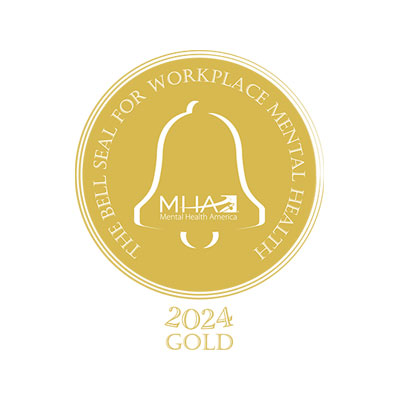Michelle Davis, DBH, Assistant Director of the DBH Program, Cummings Graduate Institute for Behavioral Health Studies
Since 2017 the trend toward acquisitions of behavioral health organizations by private equity (PE) firms in behavioral health has continued to grow, with 77% of transactions of behavioral health facilities being purchased by PE in 2017 and strategic buyers accounting for about 23% of the M&A activity (Meindl and Smart, 2018). While the 2018 overall deal value was below that of 2017, the volume of M&A deals in the healthcare sector broke records. It is reported that quarterly deal volumes were above 300 per quarter for two quarters of last year. While Long-Term Care was the largest sub-sector there was high growth reported in Behavioral Care deal volume as well (PwC, 2019).
The demand for behavioral health services will remain high for the foreseeable future as nearly 20% of adults struggle with mental illness according to the National Institute of Mental health (Nimh.nih.gov, 2018). This need is driving the demand for behavioral health services in treating not only mental illness, but also addiction, alcoholism, and many other behavioral disorders in the adult population. Much of the 2018 M&A activity in the behavioral health space is found in substance abuse (Mertz Taggart, 2019) the 2018 M&A activity also showed a rise in activity around those organizations that provide child and youth oriented services, such as autism, as well (Mertz Taggart, 2019). The child and youth market accounted for 24.3% of the M&A activity in the 2018 behavioral health arena, this is an increase of over 15% since 2016 (Capstoneheadwaters.com, 2018).
The factors that are propelling current M&A activity include the regulatory environment, high costs of inpatient care, the push toward vertical integration, technology growth, delivery models that disrupt the market, and the consumer/patient focused approach (PwC, 2019). Deals that create a competitive advantage in patient retention and outcomes, cost savings, or disrupt ineffective delivery will be sought after. The future market insight report predicts a revenue growth in behavioral health globally from 2018-2028 with outpatient counseling services projected to be the most profitable service (Reportlinker.com, 2018). This information can be useful to individuals interested in identifying market opportunities for behavioral health service delivery.
Vertically integrated mergers in health care would be those that enable a company to offer a broader range of patient care services, thus ideally, lending itself to better patient care and reduction in costs via integrated health models. It should be noted, that vertical integration is more challenging in the healthcare than a horizontal integration. The example given of a hospital acquiring another hospital would not pose the same integration challenges as an insurance company purchasing a medical provider network (Wyse, 2018). To successfully manage a vertical integration requires health executives who have a broad vision and can understand both the delivery of services to patients, and also understand the regulatory environment. The CEO of a giant insurance company and the CEO of a hospital system may have challenges if the skillset they have used to be successful in their current position is not as effective in a different setting. It is suggested that executives that have less aversion to risk and have tried and failed at new initiatives may be best suited to create successful vertical integration in the current M&A landscape (Wyse, 2018).
As I read the contemporary literature on the current landscape of M&A activity in the behavioral health space to inform the composition of newsletter article, the examples of the very few health organizations that have managed to get vertical integrations “right” really jumped out at me; particularly, that of Kaiser Permanente (Wyse, 2018). It was not lost on me that Dr. Nicholas Cummings’s vision had a lot to do with the success of integration at Kaiser having held a prominent position in integration there, steering behavioral intervention efforts there, for many years. The fact that it is currently touted as one of the best examples of this type of integration really speaks for itself with regard to the efficacy of the model.
I couldn’t help but see how closely aligned to the needs of the current marketplace are to the mission, vision, and values of our organization and the DBH degree. Our mission at Cummings Graduate Institute of Behavioral Health Studies is dedicated to disrupting healthcare by preparing entrepreneurial integrated care professionals through innovative & affordable quality distance education programs, grounded in the Biodyne Model, and focused on delivering human-centered care, population health improvements, and medical cost savings. The vision is to improve how the world experiences healthcare, and our values include collaboration, engaging stakeholders, across disciplines, to find solutions, people (patient, student) first, and teamwork. Much like a successful integration, at CGI, we believe our major accomplishments are a result of synergy (Cummings Institute, 2016). When reviewing the market trends for 2018 (Miller, 2017) it was clear that the strategies and competencies outlined as important in the current marketplace are what are also addressed in our DBH curriculum.
References:
Capstoneheadwaters.com. (2018). M&A Executive Summary Q4 2018. [online] Available at: http://bit.ly/2Sdm52h
Cummings Institute. (2016). Mission, Vision and Values for Integrated Health | Cummings Institute. [online] Available at: https://cummings.wpengine.com/mission-vision-values/
Marks, M., Mirvis, P. and Ashkenas, R. (2017). Surviving M&A. [online] Hbr.org. Available at: https://hbr.org/product/surviving-ma/R1702M-PDF-ENG
Meindl, J. and Smart, W. (2018). Behavioral Health: Sector Report. [online] Vmghealth.com. Available at: https://vmghealth.com/wp-content/uploads/2018/05/VMG-Healthcare-MA-Report-2018-2.pdf
Mertz Taggart. (2019). Behavioral Health Composite – Year in Review 2018 – Mertz Taggart. [online] Available at: https://mertztaggart.com/behavioral-health-composite-year-in-review-2018/
Miller, J. (2017). [online] Behavioral.net. Available at: https://www.behavioral.net/article/marketing/8-behavioral-health-trends-2018
Nimh.nih.gov. (2018). NIMH » Mental Illness. [online] Available at: https://www.nimh.nih.gov/health/statistics/mental-illness.shtml
PwC. (2019). US health services deals insights: Year-end 2018. [online] Available at: https://www.pwc.com/us/en/industries/health-industries/library/health-services-quarterly-deals-insights.html
Reportlinker.com. (2018). Behavioural Health Market: Outpatient Counselling Projected to be the Most Lucrative Service Type: Global Industry Analysis 2013 – 2017 and Opportunity Assessment 2018 – 2028. [online] Available at: https://www.reportlinker.com/p05503669/Behavioural-Health-Market-Outpatient-Counselling-Projected-to-be-the-Most-Lucrative-Service-Type-Global-Industry-Analysis-and-Opportunity-Assessment.html
Wyse, R. (2018). Successful vertical integration in healthcare requires past failure – MedCity News. [online] MedCity News. Available at: HTTPS://MEDCITYNEWS.COM/2018/09/VERTICAL-INTEGRATION-IN-HEALTHCARE/






























